Abstract
Growth of a barotolerant marine organism, EP-4, in a glutamate medium equilibrated with an oxy-helium atmosphere at 500 atmospheres (atm; total pressure) (20°C) was compared with control cultures incubated at hydrostatic pressures of 1 and 500 atm. Relative to the 1-atm control culture, incubation of EP-4 at 500 atm in the absence of an atmosphere resulted in an approximately fivefold reduction in the growth rate and a significant but time variant reduction in the rate constants for the incorporation of substrate into cell material and respiration. Distinct from the pressurized control and separate from potential effects of dissolution of helium upon decompression of subsamples, exposure of the organism to high-pressure oxy-helium resulted in either a loss of viability of a large fraction of the cells or the arrest of growth for one-third of the experimental period. After these initial effects, however, the culture grew exponentially at a rate which was three times greater than the 500-atm control culture. The rate constant for the incorporation of substrate into cell material was also enhanced twofold in the presence of high-pressure oxy-helium. Dissolved oxygen was well controlled in all of the cultures, minimizing any potential toxic effects of this gas.
Full text
PDF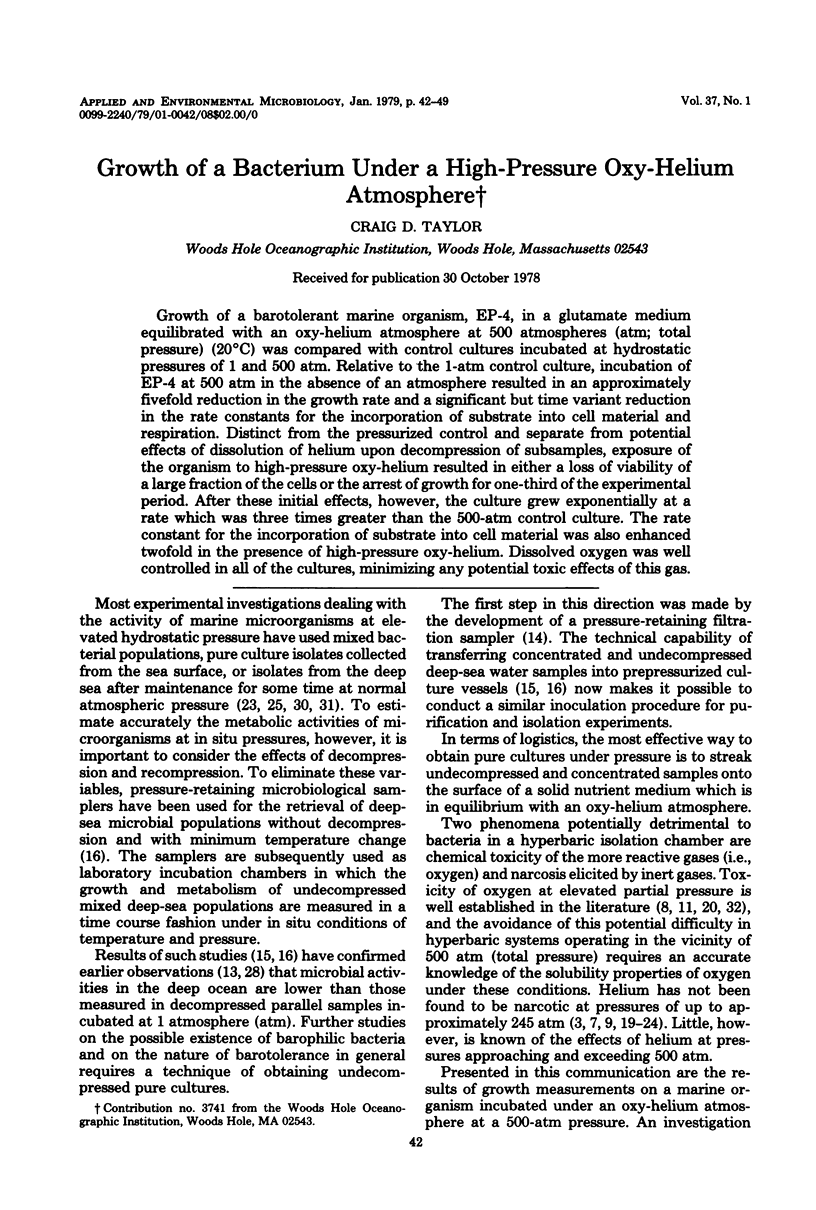
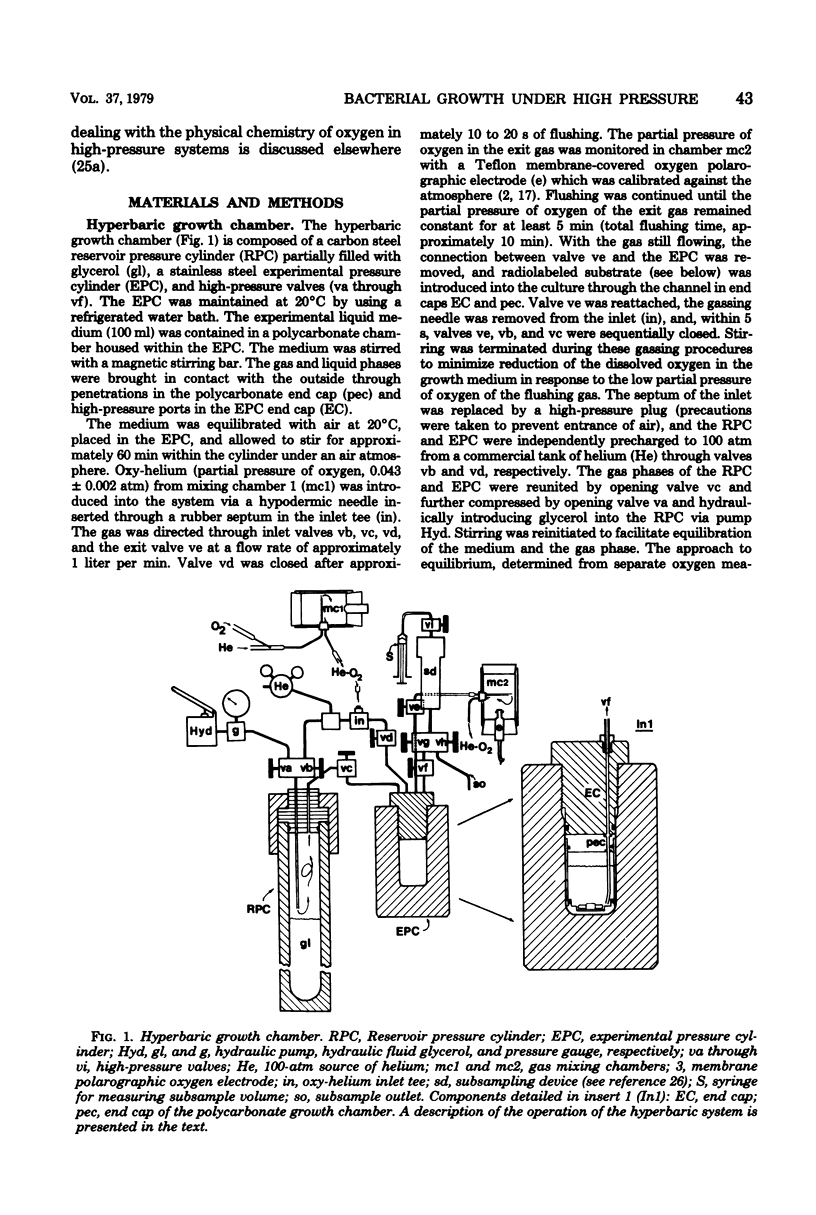
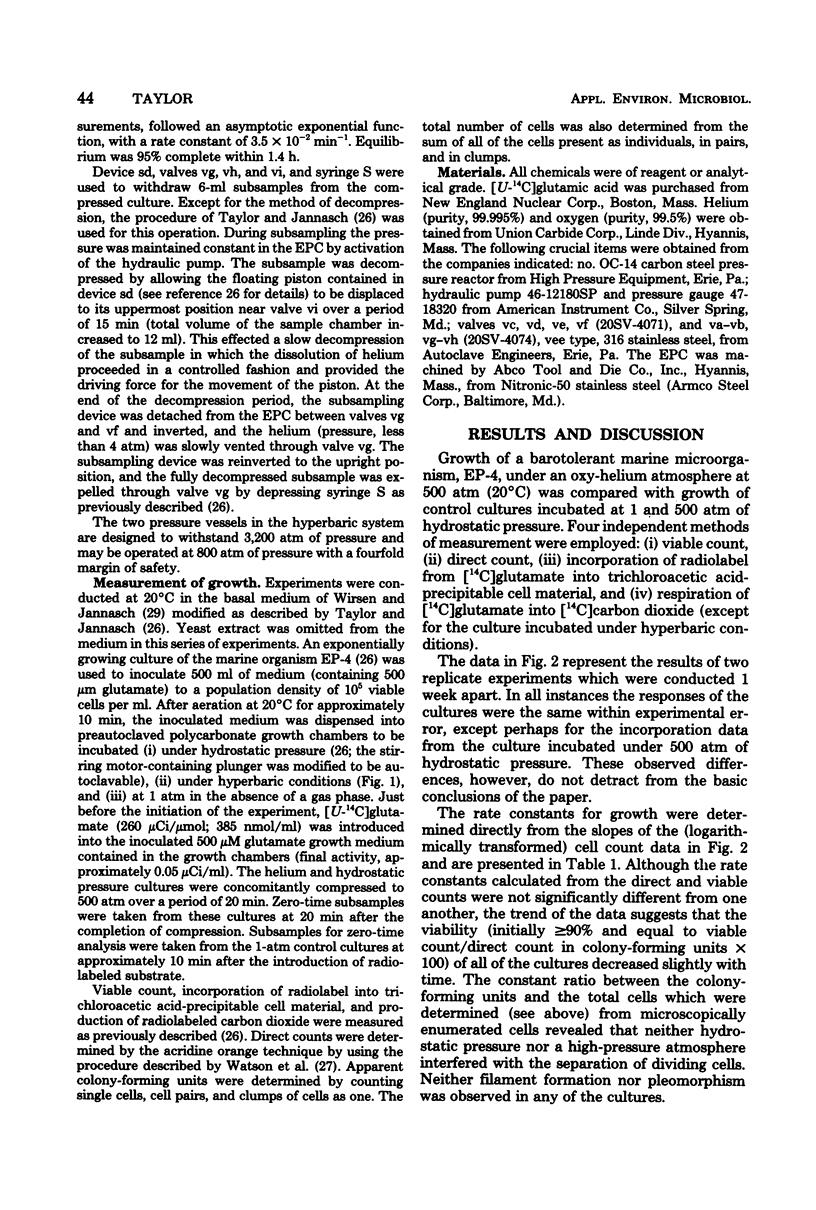
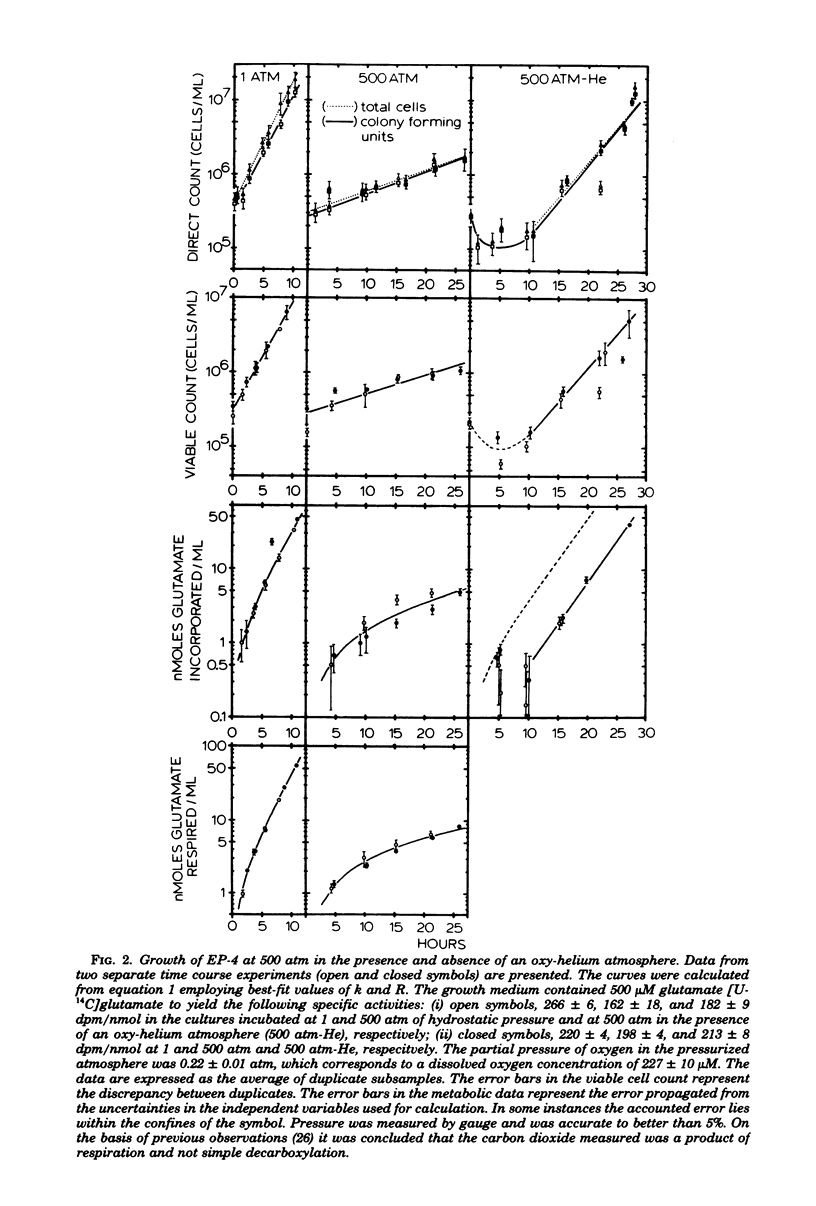
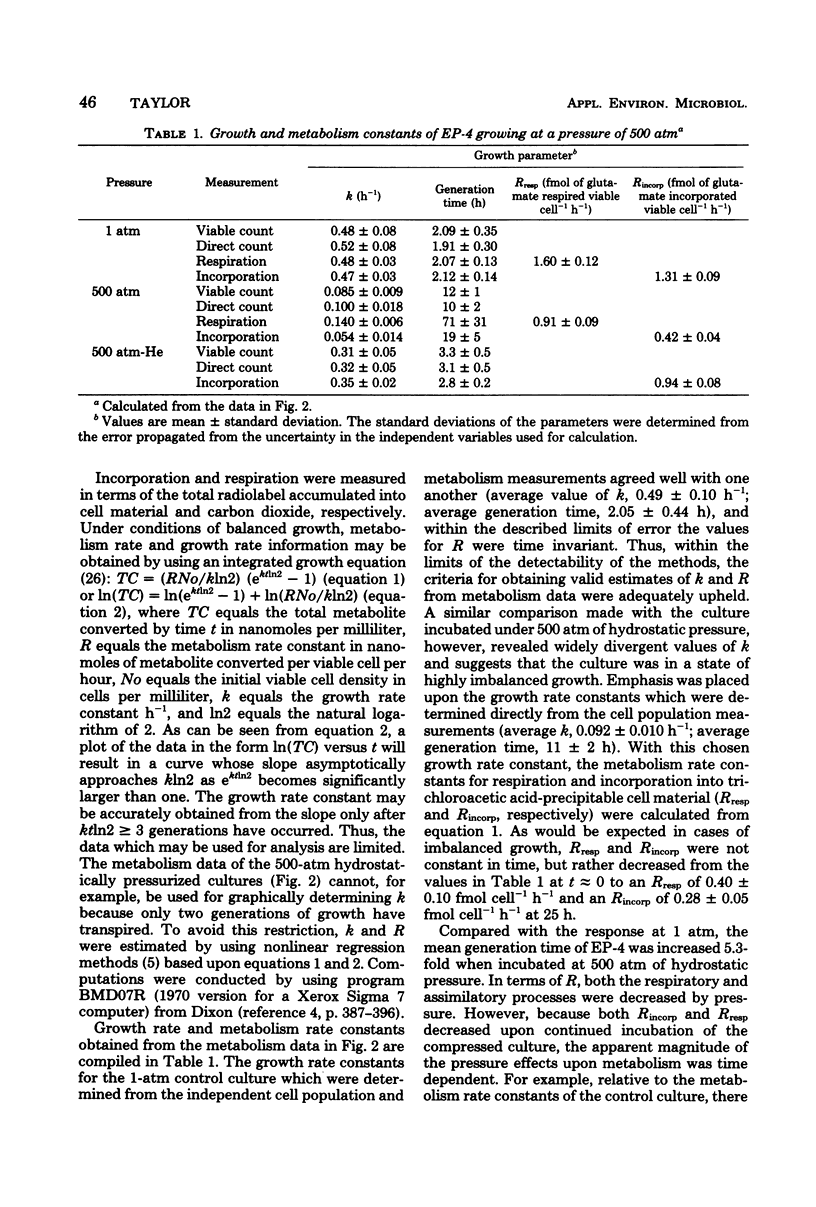

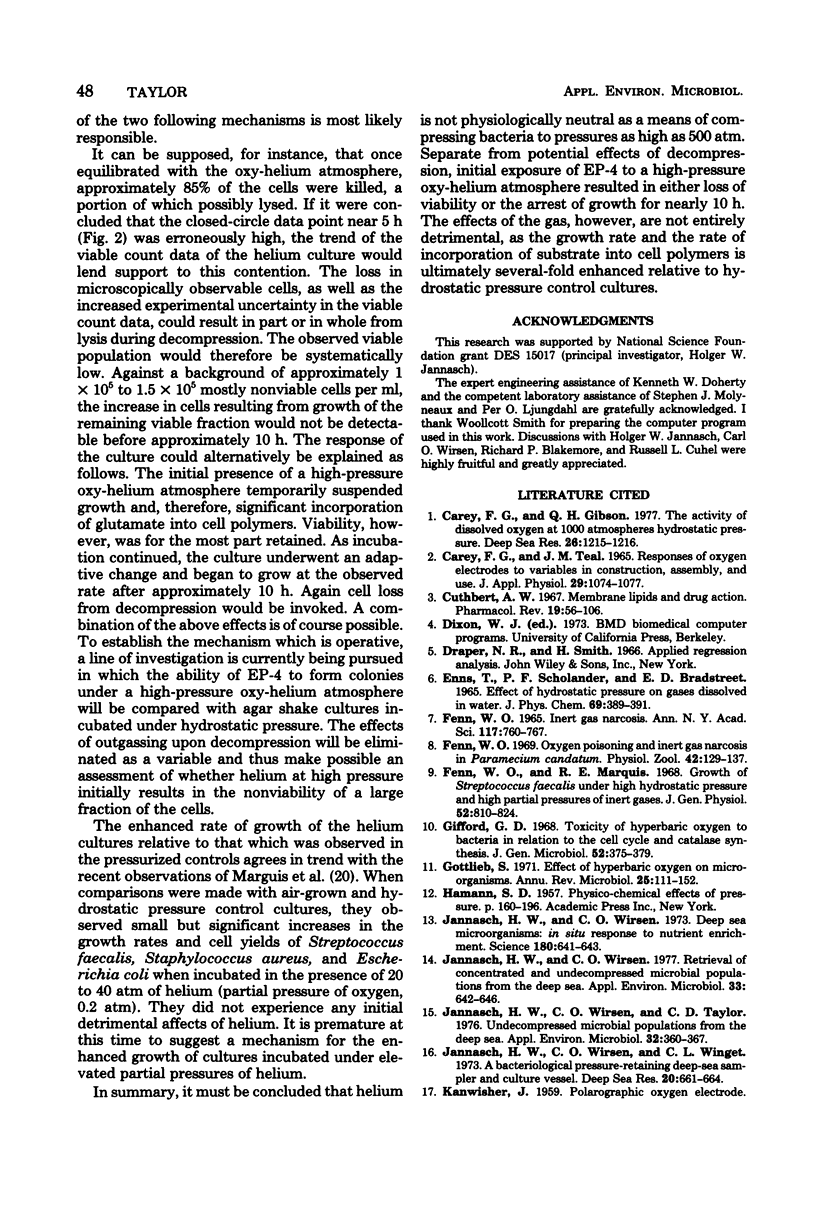
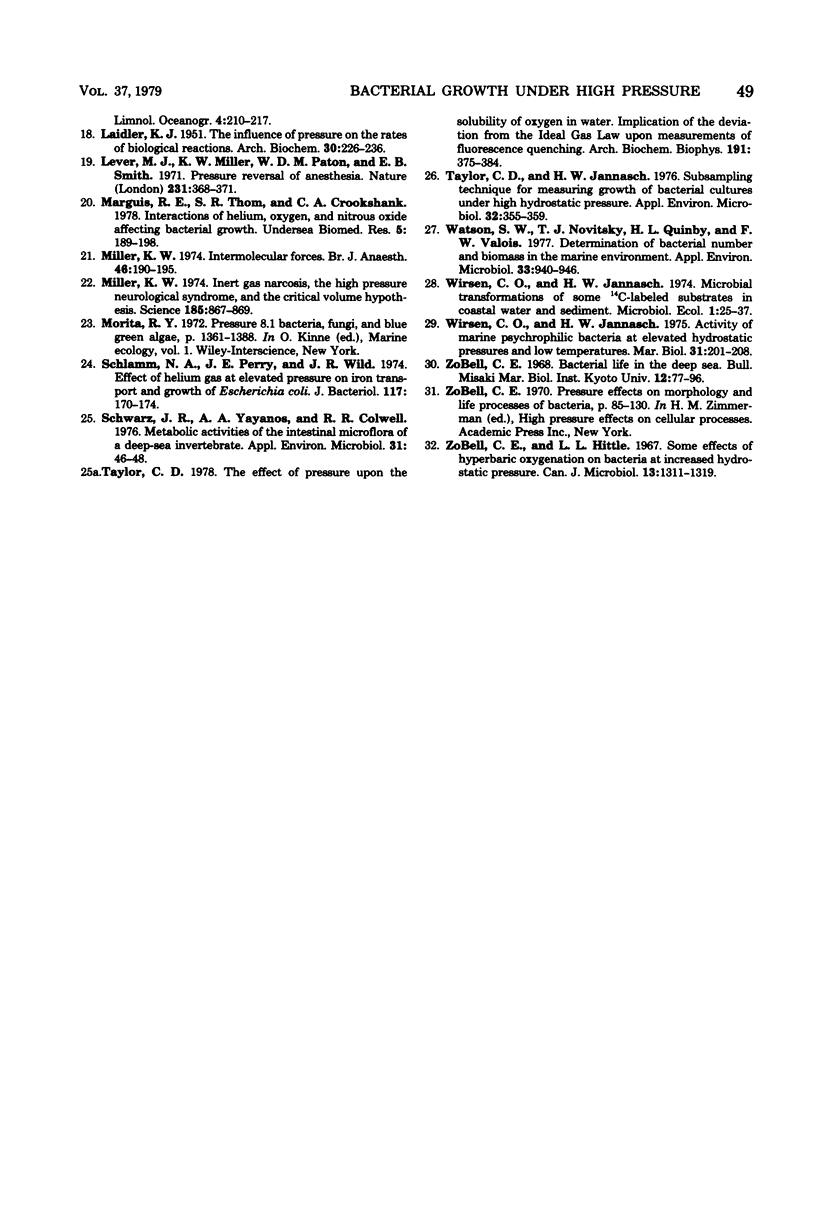
Selected References
These references are in PubMed. This may not be the complete list of references from this article.
- Carey F. G., Teal J. M. Responses of oxygen electrodes to variables in construction, assembly, and use. J Appl Physiol. 1965 Sep;20(5):1074–1077. doi: 10.1152/jappl.1965.20.5.1074. [DOI] [PubMed] [Google Scholar]
- Cuthbert A. W. Membrane lipids and drug action. Pharmacol Rev. 1967 Mar;19(1):59–106. [PubMed] [Google Scholar]
- ENNS T., SCHOLANDER P. F., BRADSTREET E. D. EFFECT OF HYDROSTATIC PRESSURE ON GASES DISSOLVED IN WATER. J Phys Chem. 1965 Feb;69:389–391. doi: 10.1021/j100886a005. [DOI] [PubMed] [Google Scholar]
- FENN W. O. PHARMACOLOGY IN HYPERBARIC OXYGENATION. INERT GAS NARCOSIS. Ann N Y Acad Sci. 1965 Jan 21;117:760–767. [PubMed] [Google Scholar]
- Fenn W. O., Marquis R. E. Growth of Streptococcus faecalis under high hydrostatic pressure and high partial pressures of inert gases. J Gen Physiol. 1968 Nov;52(5):810–824. doi: 10.1085/jgp.52.5.810. [DOI] [PMC free article] [PubMed] [Google Scholar]
- Gottlieb S. F. Effect of hyperbaric oxygen on microorganisms. Annu Rev Microbiol. 1971;25:111–152. doi: 10.1146/annurev.mi.25.100171.000551. [DOI] [PubMed] [Google Scholar]
- Jannasch H. J., Wirsen C. O., Taylor C. D. Undecompressed microbial populations from the deep sea. Appl Environ Microbiol. 1976 Sep;32(3):360–367. doi: 10.1128/aem.32.3.360-367.1976. [DOI] [PMC free article] [PubMed] [Google Scholar]
- Jannasch H. W., Wirsen C. O. Deep-Sea Microorganisms: In situ Response to Nutrient Enrichment. Science. 1973 May 11;180(4086):641–643. doi: 10.1126/science.180.4086.641. [DOI] [PubMed] [Google Scholar]
- Jannasch H. W., Wirsen C. O. Retrieval of concentrated and undecompressed microbial populations from the deep sea. Appl Environ Microbiol. 1977 Mar;33(3):642–646. doi: 10.1128/aem.33.3.642-646.1977. [DOI] [PMC free article] [PubMed] [Google Scholar]
- LAIDLER K. H. The influence of pressure on the rates of biological reactions. Arch Biochem. 1951 Feb;30(2):226–236. [PubMed] [Google Scholar]
- Lever M. J., Miller K. W., Paton W. D., Smith E. B. Pressure reversal of anaesthesia. Nature. 1971 Jun 11;231(5302):368–371. doi: 10.1038/231368a0. [DOI] [PubMed] [Google Scholar]
- Marquis R. E., Thom S. R., Crookshank C. A. Interactions of helium, oxygen, and nitrous oxide affecting bacterial growth. Undersea Biomed Res. 1978 Jun;5(2):189–198. [PubMed] [Google Scholar]
- Miller K. W. Inert gas narcosis, the high pressure neurological syndrome, and the critical volume hypothesis. Science. 1974 Sep 6;185(4154):867–869. doi: 10.1126/science.185.4154.867. [DOI] [PubMed] [Google Scholar]
- Miller K. W. Intermolecular forces. Br J Anaesth. 1974 Mar;46(3):190–195. doi: 10.1093/bja/46.3.190. [DOI] [PubMed] [Google Scholar]
- Schlamm N. A., Perry J. E., Wild J. R. Effect of helium gas at elevated pressure on iron transport and growth of Escherichia coli. J Bacteriol. 1974 Jan;117(1):170–174. doi: 10.1128/jb.117.1.170-174.1974. [DOI] [PMC free article] [PubMed] [Google Scholar]
- Schwarz J. R., Yayanos A. A., Colwell R. R. Metabolic activities of the intestinal microflora of a deep-sea invertebrate. Appl Environ Microbiol. 1976 Jan;31(1):46–48. doi: 10.1128/aem.31.1.46-48.1976. [DOI] [PMC free article] [PubMed] [Google Scholar]
- Taylor C. D., Jannasch H. W. Subsampling technique for measuring growth of bacterial cultures under high hydrostatic pressure. Appl Environ Microbiol. 1976 Sep;32(3):355–359. doi: 10.1128/aem.32.3.355-359.1976. [DOI] [PMC free article] [PubMed] [Google Scholar]
- Taylor C. D. The effect of pressure upon the solubility of oxygen in water. Implications of the deviation from the ideal gas law upon measurements of fluorescence quenching. Arch Biochem Biophys. 1978 Nov;191(1):375–384. doi: 10.1016/0003-9861(78)90101-7. [DOI] [PubMed] [Google Scholar]
- Watson S. W., Novitsky T. J., Quinby H. L., Valois F. W. Determination of bacterial number and biomass in the marine environment. Appl Environ Microbiol. 1977 Apr;33(4):940–946. doi: 10.1128/aem.33.4.940-946.1977. [DOI] [PMC free article] [PubMed] [Google Scholar]
- ZoBell C. E., Hittle L. L. Some effects of hyperbaric oxygenation on bacteria at increased hydrostatic pressures. Can J Microbiol. 1967 Oct;13(10):1311–1319. doi: 10.1139/m67-177. [DOI] [PubMed] [Google Scholar]


